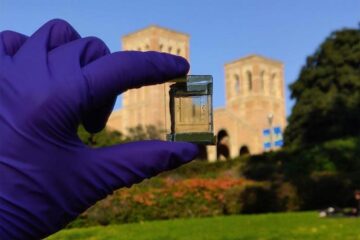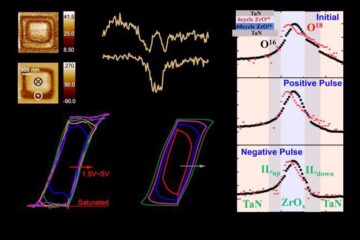Survey launched on a new generation of roundabouts

Turbo roundabout northeast of Cottbus city centre, South Brandenburg.
(c) Chair of Integrated Transport Planning and Traffic Engineering/TU Dresden
Traffic researchers from TU Dresden and Ruhr-University Bochum want to optimise the design, marking and signage of “turbo roundabouts”.
Roundabouts have become an integral part of the German road network. In many places they increase traffic safety at junctions and promote traffic flow. Since the 1990s, this type of junction has become widespread throughout Germany. Thirty years later, a new type of roundabout is the focus of a research project that has become more widespread in recent years: “turbo roundabouts”.
With these roundabouts, motorists must know exactly which direction (and exit) to take before entering and select the appropriate lane of the roundabout. This involves some risks and requires prudent traffic behaviour from all involved. Traffic researchers at TU Dresden and Ruhr-University Bochum are currently investigating what needs to be considered and how such turbo roundabouts can be designed and used safely and efficiently.
This also includes an online survey. People who regularly participate in road traffic are cordially invited to take part in the survey, which will run until about the end of April – to the survey, duration approx. 10 minutes.
Questions that concern the researchers are:
- What is important at such special roundabouts so that the decision to drive is made in good time?
- How can accidents be avoided?
- What is important to drivers so that they feel safe and oriented?
- How can the approaches to such roundabouts be crossed on foot or by bicycle?
No lane change necessary in the roundabout
Turbo roundabouts have a larger capacity than the classic design of previous roundabouts and can therefore handle more vehicles. There are sometimes several lanes in the approaches and in the circle, and no lane changes are necessary in the circle itself. “Drivers are guided into the correct lane for their destination within the roundabout,” explain Julian Schmitz (Ruhr University Bochum), Armin Kollascheck and Martin Bärwolff (both TU Dresden).
In order to optimise the design of such roundabouts, the three traffic researchers have already carried out traffic analyses on turbo roundabouts and also analysed the occurrence of accidents. In addition, they now want to use the survey to determine what attitudes and reservations motorists, cyclists and pedestrians have about turbo roundabouts, what type of signage is considered sensible and how the lanes should be marked or structurally separated to offer the greatest possible orientation.
The survey is part of a research project commissioned by the German Federal Highway Research Institute. The Chair of Integrated Transport Planning and Traffic Engineering at TU Dresden and the Chair of Transport – Planning and Management at the Ruhr University Bochum are involved in the project.
Media contact
Martin Bärwolff
Chair of Integrated Transport Planning and Traffic Engineering
“Friedrich List” Faculty of Transport and Traffic Sciences, TU Dresden
Phone: +49 351 463-36661
Mail: martin.baerwolff@tu-dresden.de
Wissenschaftliche Ansprechpartner:
Julian Schmitz
Chair of Transport – Planning and Management
Ruhr University Bochum
Tel.: +49 234 32 27587
Mail: julian.schmitz-h56@rub.de
Weitere Informationen:
https://verkehrswesenrub.limesurvey.net/287725?lang=de Link to the survey (only in German)
Media Contact
All latest news from the category: Transportation and Logistics
This field deals with all spatial and time-related activities involved in bridging the gap between goods and people, including their restructuring. This begins with the supplier and follows each stage of the operational value chain to product delivery and concludes with product disposal and recycling.
innovations-report provides informative reports and articles on such topics as traffic telematics, toll collection, traffic management systems, route planning, high-speed rail (Transrapid), traffic infrastructures, air safety, transport technologies, transport logistics, production logistics and mobility.
Newest articles

Advance in light-based computing
…shows capabilities for future smart cameras. UCLA-developed experimental device demonstrates ability to reduce glare in images. Researchers developing the next generation of computing technology aim to bring some light to…

Evidence for reversible oxygen ion movement during electrical pulsing
…enabler of the emerging ferroelectricity in binary oxides. In a recent study published in Materials Futures, researchers have uncovered a pivotal mechanism driving the emergence of ferroelectricity in binary oxides….

Next-generation treatments hitch a ride into cancer cells
Researchers from Osaka University discover that opening a channel into cancer cells helps antisense oligonucleotide drugs reach their targets. Antisense oligonucleotides (ASOs) are next-generation drugs that can treat disease by…





















